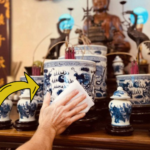In recent years, people in the Mekong Delta have been using the dư fruit for decoration with the desire for abundance and wealth. The dư fruit is smaller than the palm of a hand, with a deep yellow and glossy color. What sets it apart is that it can be preserved for a long time, up to 5-7 days, or even 10 days and still look beautiful. However, according to many experts, this type of fruit has the potential to be deadly. So, what is the truth about this fruit? Let’s find out!
For more information:
1 What is the dư fruit?
 What is the dư fruit?
What is the dư fruit?
The dư fruit is known by various names such as cà vú bò, cà vú, trái đầu bò, or its scientific name, Solanum Mammosum. This type of fruit belongs to the nightshade family, which includes flowering plants. The dư fruit is small and firm, reaching a height of about 1.5m with thick and lengthy hairs along its stem. Its leaf blades are large, measuring about 10-15 cm. Each branch can have 3-4 fruits.
In Vietnam, the dư fruit is often found in the Western provinces. It can also be found in locations such as Da Lat or some northern provinces like Cao Bang, Lang Son, Phu Tho, etc. The main uses of the dư fruit are for antibacterial purposes, pain relief, anti-inflammatory, reducing bruises, treating lymph nodes, and preventing armpit acne. The fruit’s juice can also be used as a cleaning agent and insect repellent.
2 Can the dư fruit be eaten?
 Why is the dư fruit “poisonous and potentially lethal”?
Why is the dư fruit “poisonous and potentially lethal”?
According to the Missouri Botanical Garden, this is a toxic fruit that contains solanine and scopolamine at high concentrations, making it highly poisonous.
Together with the toxic substances atropine and hyoscyamine, it can cause hallucinations and muscle paralysis. In fact, just 2 fruits can be fatal for adults.
However, this fruit also has uses such as external application for antibacterial purposes, pain relief, anti-inflammatory effects, or using the fruit’s juice as a cleaning agent or insect repellent.
In conclusion, although many people use this fruit for decoration purposes, it is a poisonous fruit, so you need to be careful, especially with children. Therefore, you can offer the dư fruit for ritual purposes, but remember to remind everyone in the family about its toxicity.
For more information:
3 How is the dư fruit used for medicinal purposes?
 How is the dư fruit used for medicinal purposes?
How is the dư fruit used for medicinal purposes?
The dư plant is a poisonous plant that can be fatal. However, if used correctly, the dư fruit can become a medicine.
In traditional medicine, the entire dư plant can be processed into a topical medicine for antibacterial purposes. Additionally, the dư fruit can also be used as a sedative (in small doses and with caution due to its toxicity).
According to Chinese folk remedies, you can split the dư fruit in half, heat it over a flame until it gets slightly hot, and then apply it to the skin. This remedy can help relieve pain, reduce inflammation, and bruises, etc. Furthermore, the stem of the dư plant is also a medicine that has effects on treating intestinal disorders and epigastric pain.
Due to concerns about the toxicity of the dư plant, the use of dư plant-based remedies is not common. Most often, the dư plant is used to kill insects and soft-bodied animals.
We hope that the information we have provided has helped you understand what the dư fruit is and whether it can be consumed. If you plan to use dư fruit for decoration during the Lunar New Year, please be cautious. If you have any further questions, please leave a comment so that we can assist you.
The Significance of Vietnamese Incense-burning Culture: Do you truly understand?
Incense is a cherished tradition in Vietnamese culture that has been passed down through generations. Lighting incense is a way to show respect, gratitude, and reverence towards our ancestors, grandparents, and divine beings. It is a beautiful and meaningful practice that holds a special place in the hearts of Vietnamese people.



































